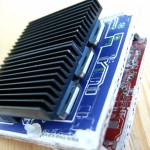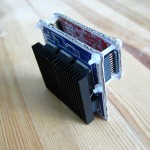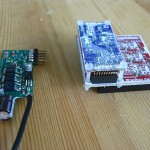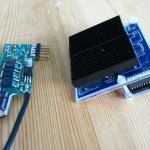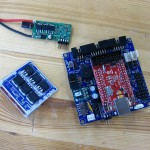Over the last two weeks many things happened. I found out that there is a really open-source and open-hardware quadrocopter project in the wild. It is called booz and is part of the paparazzi project. Code and schematics just as board layouts are under the GPLv2 or later license. That is really awesome news.
This project is intended for research and universities so the boards are using BGA parts that are difficult to solder for a mere mortal, and there is some lack in documentation. That is why some other people and me started a project called openmulticopter. The basic idea is to create and maintain a completely open-source quadrocopter/multicopter platform for everyone. As a multicopter does not consist only of the control electronics but also contains parts like remote control receiver, brushless motor controllers, a frame, and so on, we tried to combine many open-source parts that are already out there. Just take a look into the wiki for more details.
Some highlights of open-source components that we have chosen so far are:
- booz (the core of the platform)
- libopenstm32 (firmware library for STM32 microcontrollers)
- RCOPEN24 (a 2.4GHz remote control system)
- open-bldc (brushless motor controllers)
We also formulated a mission statement that can be found in the openmulticopter wiki.
There is still a lot of work in front of us, but I am really happy with the progress we are making. If you are interested in contributing just drop into the #openmulticopter IRC channel on Freenode, or write an email to the mailing list.


